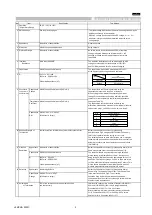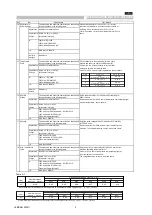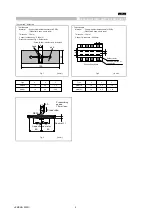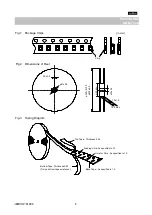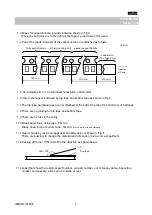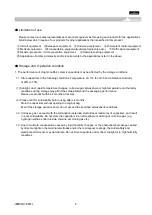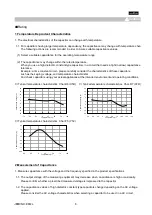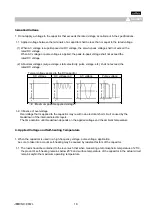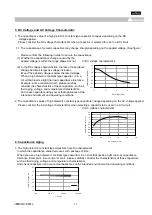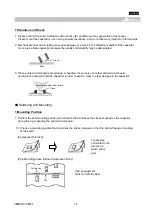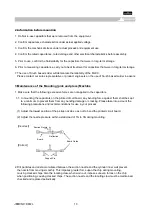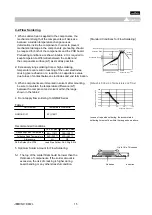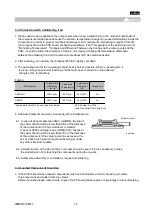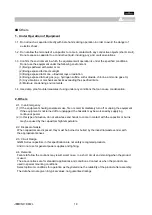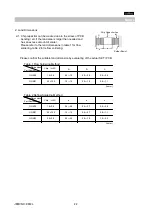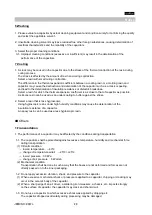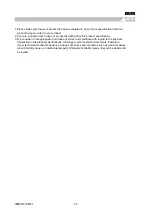
4-3.Correction with a Soldering Iron
1. When sudden heat is applied to the components when using a soldering iron, the mechanical strength of
the components will decrease because the extreme temperature change can cause deformations inside the
components. In order to prevent mechanical damage to the components, preheating is required for both
the components and the PCB board. Preheating conditions, (The "Temperature of the Soldering Iron tip",
"Preheating Temperature", "Temperature Differential" between the iron tip and the components and the
PCB), should be within the conditions of table 3. It is required to keep the temperature differential
between the soldering Iron and the component surfaces (ΔT) as small as possible.
2. After soldering, do not allow the component/PCB to rapidly cool down.
3. The operating time for the re-working should be as short as possible. When re-working time is
too long, it may cause solder leaching, and that will cause a reduction in the adhesive
strength of the terminations.
Table 3
*Applicable for both Pb-Sn and Lead Free Solder.
Pb-Sn Solder: Sn-37Pb
Lead Free Solder: Sn-3.0Ag-0.5Cu
4. Optimum Solder amount when re-working with a Soldering lron
4-1. In case of sizes smaller than 0603, (GQM18), the top of
the solder fillet should be lower than 2/3's of the thickness
of the component or 0.5mm whichever is smaller.
In case of 0805 and larger sizes, (GQM21/22), the top of
the solder fillet should be lower than 2/3's of the thickness
in section
of the component. If the solder amount is excessive, the
risk of cracking is higher during board bending or under
any other stressful condition.
4-2. A Soldering iron with a tip of ø3mm or smaller should be used. It is also necessary to keep
the soldering iron from touching the components during the re-work.
4-3. Solder wire with ø0.5mm or smaller is required for soldering.
4-4.Leaded Component Insertion
1. If the PCB is flexed when leaded components (such as transformers and ICs) are being mounted,
chips may crack and solder joints may break.
Before mounting leaded components, support the PCB using backup pins or special jigs to prevent warping.
Caution
Air
Temperature
of Soldering
Iron tip
Preheating
Temperature
GQM22
280
℃
max.
150
℃
min.
ΔT
≦
130
℃
350
℃
max.
150
℃
min.
ΔT
≦
190
℃
Air
Part Number
Temperature
Differential
(ΔT)
Atmosphere
GQM18/21
Solder Amount
!
JEMCNC-0012L
16

